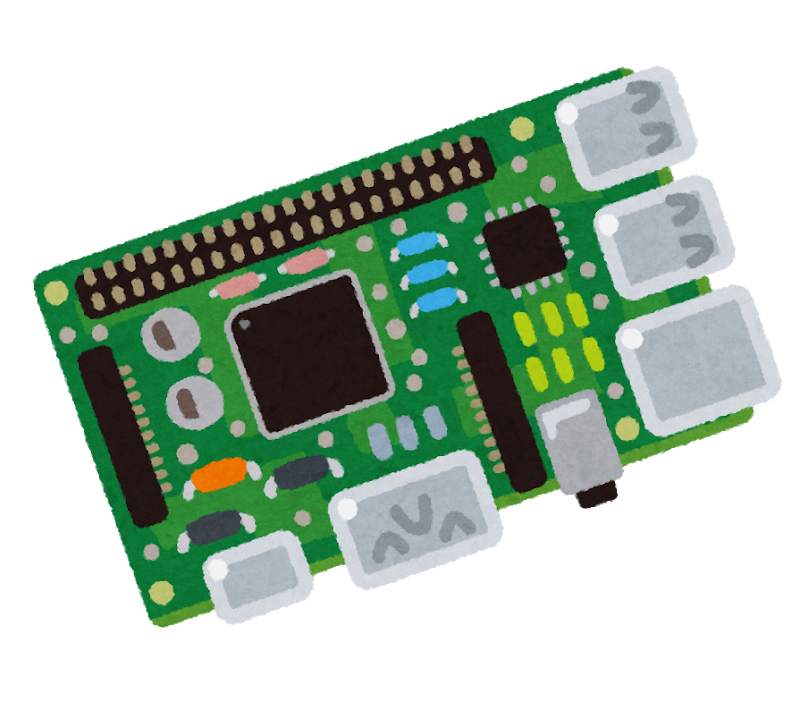

Someone identifying with Homelander would. That’s the real meme here.
Raspberry pi4 Docker:- gluetun(qBit, prowlarr, flaresolverr), tailscale(jellyfin, jellyseerr, mealie), rad/read/sonarr, pi-hole, unbound, portainer, watchtower.
Raspberry pi3 Docker:- pi-hole, unbound, portainer.


Someone identifying with Homelander would. That’s the real meme here.
I remember Watchtower helpfully stopping Pihole before pulling the new image when I only had the one instance running… All while I was out at work with the fiancée on her day off. So many teaching moments in so little time.
Home server: Proxmox (Debian). Redundant DNS: Raspbian (Debian). Parent’s server: Debian (Debian).
Gonna be honest, I mostly live off my phone and a retroid pocket.
Linux does what Windont?


Me looking for apt update && apt upgrade -y


Hehe, I see what you did there.
MLK on climate change (probably):
[…]that [humanities] great stumbling block in his stride toward freedom is not the [oil company] or the [billionaire] but the white moderate, who is more devoted to ‘order’ than to justice; who prefers a negative peace which is the absence of tension to a positive peace which is the presence of justice; who constantly says: ‘I agree with you in the goal you seek, but I cannot agree with your methods of direct action’; who paternalistically believes he can set the timetable for another man’s freedom; who lives by a mythical concept of time and who constantly advises [climate aware] to wait for a ‘more convenient season.’


Personally running an Argon Neo on the pi 4, zero complaints. Flirc is better looking by half (imho), but the Neo out performs it thermally (with the cover off, at least the articles I read claimed as much when I was looking).
I’m running it as a pihole/jellyfin&servarr passively cooled with zero problems.
Edit, one complaint: I sometimes regret not setting up NVME support, instead I have the OS on a USB SSD. That, a USB HDD, an ethernet cable, and USB keyboard mouse makes the IO a little crowded.


I guessed it was a “once bitten twice shy” kind of thing. This is all a hobby to me so the cost-benefit, I think, is vastly different, nothing on my setup is critical. Keeping all those records and up to date on what version everything is on, and when updates are available and what those updates do and… sound like a whole lot of effort when currently my efforts can be better spent in other areas.
In my arrogance I just installed Watchtower, and accepted it can all come crashing down. When that happens I’ll probably realise it’s not so much effort after all.
That said I’m currently learning, so if something is going to be breaking my stuff, it’s probably going to be me and not an update. Not to discredit your comment, it was informative and useful.


When I asked this question
So there are many reasons, and this is something I nowadays almost always do. But keep in mind that some of us have used Docker for our applications at work for over half a decade now. Some of these points might be relevant to you, others might seem or be unimportant.
- The first and most important thing you gain is a declarative way to describe the environment (OS, dependencies, environment variables, configuration).
- Then there is the packaging format. Containers are a way to package an application with its dependencies, and distribute it easily through the docker hub (or other registries). Redeploying is a matter of running a script and specifying the image and the tag (never use latest) of the image. You will never ask yourself again “What did I need to do to install this again? Run some random install.sh script off a github URL?”.
- Networking with docker is a bit hit and miss, but the big thing about it is that you can have whatever software running on any port inside the container, and expose it on another port on the host. Eg two apps run on port :8080 natively, and one of them will fail to start due to the port being taken. You can keep them running on their preferred ports, but expose one on 18080 and another on 19080 instead.
- You keep your host simple and empty of installed software and packages. Less of a problem with apps that come packaged as native executables, but there are languages out there which will require you to install a runtime to be able to start the app. Think .NET, Java but there is also Python out there which requires you to install it on the host and have the versions be compatible (there are virtual environments for that but im going into too much detail already).
I am also new to self hosting, check my bio and post history for a giggle at how new I am, but I have taken advantage of all these points. I do use “latest” though, looking forward to seeing how that burns me later on.
But to add one more:- my system is robust, in that I can really break my containers (and I do), and to recover is a couple clicks in Portainer. Then I can try again, no harm done.


Finally got it set up, pointed Prowlarr at it which synced to Sonarr and Radarr, not readarr or lidarr though. I couldn’t manually point readarr at it either without getting a
Query successful, but no results in the configured categories were returned from your indexer. This may be an issue with the indexer or your indexer category settings
which is a shame. Still a potentially powerful bit of kit regardless.


My unbound is on v1.13.1 (Raspbian) after update/upgrade. I’ve read it lags behind the main release by alot, should I trust the process that everything is fine.


Ah, I knew it was bypassing the pi-hole, I thought it was IPv6. I think I made the mistake of changing more than one thing at once, what I did worked and I moved on to the next functionality I was chasing. I’ll try enabling IPv6 on the pihole, I know at least if I get Ads with it on its not IPv6.


You have cleared up a lot of misconceptions for me, I have not been port forwarding, I have not learned how yet. I think I’m good. I don’t mind breaking functional stuff, and have a lot already, but I really don’t want to explain to my fiancée that the reason someone is in her bank is because I wanted to watch Samurai Jack.
I have been keeping it as insular as possible for this reason, and the next thing I intent to learn is to make it more insular by putting the pi on a subnet of its own. Actually, thank you for writing that up. I have been actively resisting using people for IT support, as I know it takes time. I have been trying to find everything I can, there isn’t much or what there is assumes knowledge I don’t have.
There’s a comment with a list of stuff to do that I’ve saved. So I’ll probably start knocking that out one by one.


When it was active I was getting ads. I disabled the pi-hole registered an increase in traffic and there were no more ads. I don’t know why. It’s working as it is and I’ll tinker when I know more.


That’s a relief. Thank you.


Both pi’s have static IPs.
I asked the *arrs to talk to each other, and when they didn’t work (and only when they didnt work) I "ufw allow"ed the relevant port.
I just want to patch up my firewall layer as best I can, and then start building security layers on top/below it as I learn how.


I don’t know, what’s more I don’t know how to check.Which ever most likely?
ISP plastic box didn’t allow custom DNS, I disabled DHCP and IPv6. On pihole I enabled DHCP with IPv6 disabled.
I know, I know enough to be dangerous now, and I’m trying to get the system through my dangerous phase. I don’t think I know enough to ask intelligent questions yet…


ISP modem. I have a pi3 running pihole-dhcp-unbound, ufw and log2ram.
My system is a pi4 running *arrs, qBit, fail2ban, portainer in docker and ufw for now. Use case is: via mobile phone access *arrs, let them do their things and manually play files via hdmi or move files via thumbdrive. I was thinking giving up the phone access to put them on their own network, but subnets are beyond my ken for now.
Hoping to increment my security, and then the system as my skills develop.
Edit, qBit and prowlarr are behind gluetun set up for mullvard. I’m in the UK so had to put the indexer behind a VPN. UFW
Just because you didn’t see value in the product doesn’t mean others don’t. It saved space for me because I don’t need a slow cooker, rice cooker, pressure cooker, yogurt maker etc. They’re all gone and replaced with a one stop shop of “if it’s wet it goes in the IP”.
It simplified processes and made them amazingly repeatable too. Stocks are a breeze: set, forget, comeback when it beeps. I don’t nurse temperatures, times and don’t stress things boiling over, boiling dry, getting too hot or not hot enough.
Sterilisation for brewing: come back when it beeps. Yogurt making: come back when it beeps. Dough fermenting: come back when it beeps. Soup: come back when it beeps. My fiancée wouldnt touch pressure cooking because she’s anxious it will explode, now she comes back when it beeps.
It doesn’t do anything as well as any dedicated device true enough, but it’s good enough to not buy those things and just use the IP. I’d have to eat a lot of rice to get a rice cooker as well as an IP.